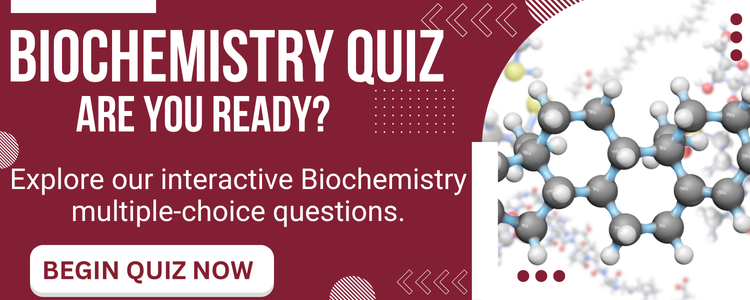In this article, I briefly describe the types of associations among soil microorganisms.
Microbial Ecosystem
The total microbial flora along with the soil’s physical composition and physical characteristics, includes the microbial ecosystem. It is the sum of the biotic and abiotic components of soil. The soil microorganisms exhibit many different types of interactions or associations. These interactions are neutral, positive, or negative (figure 1). The associations between different soil microorganisms, whether of a symbiotic or antagonistic nature, influence the activities of microorganisms in the soil.

Positive Associations
Three types of positive associations exist between microorganisms, which can be described as mutualism, commensalism, and proto-cooperation.
Mutualism
Mutualism is a symbiotic relationship in which both organisms benefit from the interaction. The specific benefits depend on the nature of their interactions. Syntrophism is a form of mutualism where two species exchange nutrients. An example is the relationship between blue-green algae and fungi in lichen.
The fungus encases the algal cells within its tissues, protecting them from environmental stresses. In return, the fungus benefits from the CO2 produced by the algae during photosynthesis. The algal or cyanobacterial cells are photosynthetic and convert atmospheric carbon dioxide into organic sugars, which nourish both symbionts. Both organisms also obtain water and minerals from their surroundings, mainly from rain and dust. This lichen partnership is a close symbiosis that expands the ecological range of both organisms, though it is not always essential for their survival, as some algae can live independently.
Another example of mutualism involves metabolic interactions between species that produce different outcomes when combined, as compared to their actions. A mutualistic relationship between Thiobacillus ferrooxidans and Beijerinckia lacticogenes aids in the leaching of copper from ore. When both species are grown together in a medium lacking added carbon and nitrogen sources, and with a sterile ore concentrate, their combined growth enhances the rate of copper leaching. This process involves microorganisms oxidizing insoluble metal sulfides into soluble sulfates, facilitating the recovery of metal from the ore.
Microorganisms can also form mutualistic relationships with plants, as seen in nitrogen-fixing bacteria like Rhizobium living in the roots of legumes (plants in the family Leguminosae). In this partnership, the bacteria gain protection from environmental stresses, while the plant benefits from the readily available nitrate nitrogen produced by the bacteria.
Commensalism
Commensalism refers to a relationship between organisms where one species benefits, while the other remains unaffected. This is commonly observed in soil during the breakdown of complex molecules like cellulose and lignin. For instance, certain fungi break down cellulose into glucose, which many bacteria can use, even though they can’t directly break down cellulose. They rely on the glucose and organic acids produced by the fungi.
Another example of commensalism occurs when a substrate is altered by the combined action of multiple species, rather than by individual species alone. Lignin, a primary component of woody plants, is typically resistant to degradation by most microorganisms. However, in forest soils, a group of Basidiomycete fungi can break down lignin, and the resulting degraded products are then utilized by various fungi and bacteria that cannot directly degrade lignin.
Proto-cooperation
Proto-cooperation is a mutually beneficial interaction between two species, though they do not depend on each other for survival. It is a form of mutualism. A common example of proto-cooperation occurs between soil bacteria or fungi and plants growing in the soil. While none of the species involved require the relationship for survival, all of them—fungi, bacteria, and higher plants—contribute to shaping soil composition and fertility.
Soil bacteria and fungi interact, producing vital nutrients for plant growth. Plants absorb these nutrients through root nodules, aiding in the decomposition of organic matter. In this way, soil bacteria and fungi improve soil fertility and structure. Meanwhile, plants benefit from essential nutrients and carbon dioxide. Nutritional proto-cooperation between bacteria and fungi, particularly in the production of vitamins, amino acids, and purines, has been observed in terrestrial ecosystems and holds significant agricultural value.
Negative Associations
The negative associations between soil microorganisms can be categorized as antagonism, competition, parasitism, and predation.
Antagonism
Amensalism refers to a relationship where one species is inhibited or harmed by another, in the same environment, also known as antagonism. The species that negatively impacts the other is considered antagonistic. Such organisms are often of significant practical importance because they produce antibiotics or other inhibitory substances that disrupt the normal growth or survival of other organisms.
Antagonistic relationships are widespread. A notable example is the antagonistic behavior of Staphylococcus aureus and Pseudomonas aeruginosa towards the fungus Aspergillus terreus. Certain pigments produced by Pseudomonas inhibit the germination of Aspergillus spores, while Staphylococcus aureus releases a diffusable antifungal substance that distorts and causes swelling in Aspergillus hyphae.
Soil Microorganisms Produce Antibiotics
Antibiotics, which are microbial inhibitors of biological origin, are commonly produced by soil microorganisms. This antibiotic production often allows the producing organism to thrive in competitive environments. For example, large populations of actinomycetes are found in the chitinous shells of dead crustaceans in the sea, possibly due to their production of antibiotics. Several species of Streptomyces from soil produce both antibacterial and antifungal antibiotics. Many commercial antibiotics, such as streptomycin, chloramphenicol, terramycin, and cycloheximide, are derived from the mass cultivation of Streptomyces, making this genus the largest group of antibiotic producers in soil. Additionally, the bacterial genus Bacillus produces antifungal agents that inhibit the growth of various soil fungi.
Production of Cyanide and Potent Lytic Enzymes by Microorganisms
Antibiosis, or the inhibition of one organism by another, can result from various factors in mixed populations. Some fungi produce cyanide, which is toxic to other microorganisms, while algae secrete fatty acids with strong antibacterial activity. Certain soil microorganisms, such as myxobacteria and streptomycetes, are antagonistic due to their secretion of potent lytic enzymes that break down the cell walls or protective layers of other organisms. Interestingly, producers of these lytic substances are often found close to sensitive organisms in natural environments without dominating them.
Amensalism specifically refers to interactions where one species suppresses the growth of another by releasing toxins such as antibiotics, harmful gases like methane, ethylene, nitrite, hydrogen cyanide (HCN), or volatile sulfur compounds like sulfides.
Competition
Soil is home to various microorganisms, leading to competition for nutrients and space. In such competitive environments, the most well-adapted microorganisms dominate or eliminate others that rely on the same limited nutrient resources. Organisms with the natural ability to grow fast, are generally better competitors.
For example, the germination of Fusarium chlamydospores, Aphanomyces oospores, and Verticillium dahlae conidia in soil requires external nutrients. However, other fungi and soil bacteria deplete these essential nutrients, preventing spore germination and thus reducing their populations. Soil bacteria also compete for space, further suppressing the growth of fungal populations.
Parasitism
Parasitism is a relationship between two organisms in which one organism, the parasite, lives on or within another, the host. The parasite depends on the host for survival, feeding on its cells, tissues, or fluids. It maintains close physical contact and forms a metabolic association with the host. All major groups of plants, animals, and microorganisms can be attacked by microbial parasites.
An example of bacterial parasitism is Bdellovibrio bacteriovorus, a Gram-negative bacterium found in soil and sewage, which attaches to a specific region of its host cell, eventually leading to the lysis of the host. This causes plaque-like areas of lysis when the parasite is cultured alongside its host bacteria. Parasitism is common in soil communities. Viruses that infect bacteria (bacteriophages), fungi, and algae are strict intracellular parasites because they cannot live independently. Additionally, many strains of fungi parasitize algae and other fungi by penetrating the host.
Fungi with antagonistic activity against plant pathogens play an important role in promoting plant growth and health. Mycoparasites and potential mycoparasites show promise as biological control agents, contributing to the natural suppression of soils against certain plant pathogens. For example, several species of Trichoderma have been successfully used to combat specific pathogenic fungi. Trichoderma species have also been developed into commercial biofungicides to control various economically significant soil-borne fungal plant pathogens. Soils contain numerous oospore parasites, which may help reduce populations of plant pathogenic Phycomycetes in soil.
Predation
Predation is a relationship in which a predator feeds on and kills its prey. Predators may or may not kill their prey before feeding, but predation usually leads to the death of the prey and the eventual consumption and absorption of its tissues.
Many species of soil-dwelling myxobacteria act as predators of other microbes. For example, Myxococcus xanthus displays several complex social behaviors, including fruiting body formation, spore formation, cooperative swarming using two motility systems, and group predation on bacteria and fungi. Myxobacteria use gliding motility to move through the soil in search of prey, producing a variety of antibiotics and lytic compounds that kill and break down prey cells and degrade complex polymers to release nutrients for growth. Nematophagous fungi are considered the most effective predatory soil fungi. Species like Arthrobotrytis and Dactylella are known for trapping nematodes.
Neutral Associations
Neutralism, or neutral association, occurs when two different species of microorganisms share the same environment without influencing each other. This type of relationship may be temporary, as changes in environmental conditions, such as nutrient availability, can alter the nature of their interaction.
Conclusion
The associations between soil microorganisms may be neutral, positive, or negative. The associations between different soil microorganisms, whether of a symbiotic or antagonistic nature, influence the activities of microorganisms in the soil. Mutualism, commensalism, and proto-cooperation are the three types of positive associations that exist among soil microorganisms. Mutualism is a symbiotic relationship in which both organisms benefit from the interaction. Commensalism refers to a relationship between organisms where one species benefits, while the other remains unaffected. This is commonly observed in soil during the breakdown of complex molecules like cellulose and lignin. Proto-cooperation is a mutually beneficial interaction between two species, though they do not depend on each other for survival. It is a form of mutualism.
The negative associations between microorganisms can be categorized as antagonism, competition, parasitism, and predation. Antagonism refers to a relationship, where one species is inhibited or harmed by another in the same environment. The species that negatively impacts the other is considered antagonistic.
Soil is home to various microorganisms, leading to competition for nutrients and space. Organisms with the natural ability to grow fast, are generally better competitors. Parasitism is a relationship between two organisms in which one organism, the parasite, lives on or within another, the host. The parasite depends on the host for survival, feeding on its cells, tissues, or fluids. Predation is a relationship in which a predator feeds on and kills its prey. Predators may or may not kill their prey before feeding, but predation usually leads to the death of the prey and the eventual consumption and absorption of its tissues.
Neutral association occurs when two different microorganisms share the same environment without influencing each other.
You may also like:
- Temperature controlling microbial growth
- Soil microbial flora
- The Importance of Aquatic Microbial Ecosystems

I, Swagatika Sahu (author of this website), have done my master’s in Biotechnology. I have around fourteen years of experience in writing and believe that writing is a great way to share knowledge. I hope the articles on the website will help users in enhancing their intellect in Biotechnology.



